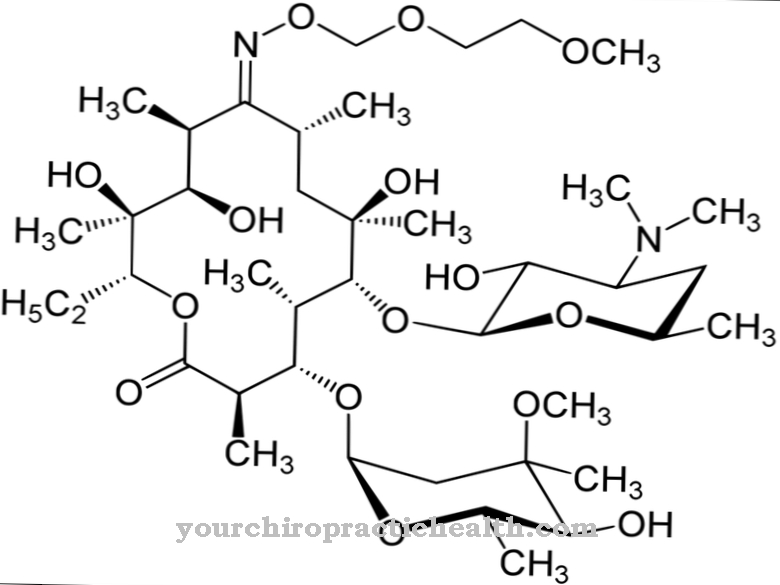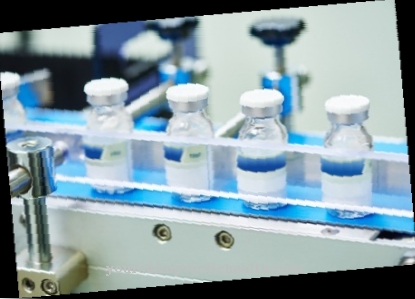Levomepromazine is an active ingredient that has a much wider range of uses than most people suspect or know. It belongs primarily to the neuroleptics, but has properties that allow it to be used in other medical areas. This mainly applies to the side effects of this active ingredient, but its benefits are not yet evident
What is Levomepromazine?

Levomepromazine its structure belongs to the phenothiazines. From a chemical point of view, this is a so-called "tricyclic compound". The middle ring of this compound is a heterocycle that has a nitrogen and sulfur atom.
Phenothiazine, which is the active ingredient group of levomepromazine, is the basis for various drugs that are primarily used as neuroleptics. Phenothiazines can have different structures, therefore they are divided into three groups:
1. the aliphatic phenothiazines,
2. Piperidines and
3. the piperazines.
Levomepromazine is a low-potency neuroleptic. Like all other relevant phenothiazine derivatives, levomepromazine also has a special property that is used in medicine in addition to its original application.
Levomepromazine normally makes you very tired - unless the patient reacts paradoxically to the intake. Therefore, levomepromazine is often prescribed as a medication to stimulate sleep in case of difficulty falling asleep and staying asleep, but also to calm down.
Pharmacological effect
Levomepromazine is a phenothiazine of the tricyclic type and from a medical point of view belongs to the neuroleptics with low potency. They block the user's dopamine receptors. These are located in the presynaptic and postsynaptic area as well as directly on the cell bodies.
However, there is not just a single dopamine receptor, but a whole group of different receptors that take care of the processing of dopamine-dependent impulses. These dopamine receptors are roughly divided into D1 and D2 receptors. Levomepromazine mainly acts on the D2 receptors and is therefore called a dopamine antagonist. It mainly addresses the postsynaptic receptors in the mesolymbic cerebral cortex by blocking them and thus dampening the effect of the body's own messenger substance dopamine.
Levomepromazine is a low-potency neuroleptic with only a slight antipsychotic effect. The strongly sedating component is used as a therapeutic effect during application. The weak effect against psychoses cannot be achieved even with higher dosages. This only adds up the undesirable side effects in this case, since the higher dosage also stimulates those receptors that were originally not intended to be addressed.
Medical application & use
Levomepromazine belongs to the phenothiazines and is a low-potency neuroleptic. It is mainly used as a medication for the treatment of anxiety disorders, states of restlessness and states of agitation.
It is also prescribed as a sleep-inducing drug for sleep disorders, as it has a strong sedative component. It is also used as an accompanying medication for chronic pain. Neuroleptics are mainly used in schizophrenia therapy because they have the property of having an antipsychotic and sedative effect.
However, the antipsychotic effect of levomepromazine is too weak, which makes it unsuitable as the sole medication in the treatment of psychoses. Neuroleptics with a stronger antipsychotic effect are available for such clinical pictures. Neuroleptics are divided into two generations based on their different mechanisms of action. Levomepromazine is counted together with promethazine to the 1st generation.
Levomepromazine might be known as a drug with the trade name "Neurocil". Promethazine is mostly sold under the name Atosil®. Even if both drugs are among the low-potency neuroleptics of the 1st generation, they are not used exclusively in medicine because the two drugs differ in certain mechanisms of action.
In addition to the treatment of mental illnesses and their effects, levomepromazine is used not only as a sleep aid, but also in the treatment of chronic and acute allergies, since, like promethazine, it is not one of the low-potency neuroleptics, but also one of the antihistamines. Therefore it can be used in certain doses as an anti-nausea medicine.
You can find your medication here
➔ Medication for sleep disordersRisks & side effects
Levomepromazine Unfortunately, even in therapeutic doses, like most drugs, it not only has positive and expressly desired effects.
It must also be borne in mind that the receptors that are specifically targeted and influenced with this drug have an individual sensitivity in each person. This is particularly true when using drugs that have an influence on processes and chemical processes in the brain. Undesired effects can have fatal effects on the vital functions and the behavior of the user. There is a high risk that the patient will react paradoxically to levomepromazine.
This means that an already existing restlessness, fear or excitement is massively increased or only caused at all if it is used as an antihistamine, for example due to its antiimetic effect against nausea or allergies. Of course, the risk of side effects also increases depending on the dosage. An overdose, whether intentional or unintentional, can have far-reaching consequences.
Restlessness and excitement are probably the more harmless consequences. Even a slight overdose can, depending on the sensitivity of its receptors, make the user subject to intensive care units, as massive cardiac arrhythmias and respiratory depression can also be triggered, for example. As with any other drug, there is of course the risk of absolute intolerance, which can cause allergic reactions and even allergic shock.













.jpg)

.jpg)
.jpg)











.jpg)